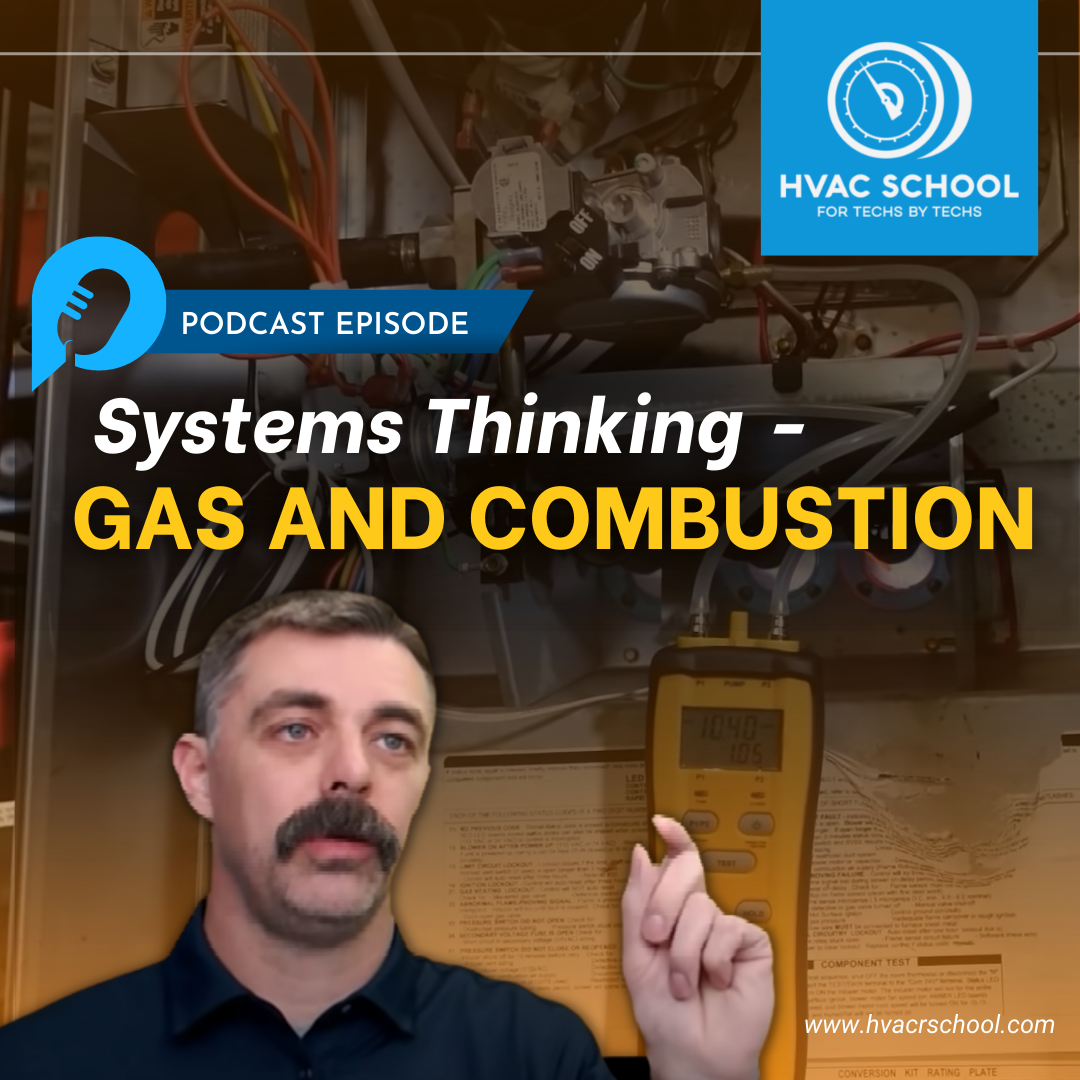Systems Thinking – Gas and Combustion

Eric Kaiser returns to the podcast to talk about how we can use systems thinking to approach gas appliances and combustion in HVAC installation and service.
Gas lines can be made of a few different materials, including black iron, copper, and CSST. These all have benefits, setbacks, and appropriate applications. For example, copper is common in propane (LP) systems but not natural gas. In coastal environments, galvanized pipe tends to be most common due to the increased likelihood of corrosion. Gas lines may also need sleeves to prevent them from interacting with moisture.
The piping also needs to be routed in accordance with code; in many cases, joints need to be exposed so that a technician can check for leaks. Keeping joints inside walls is risky, especially when light switches cause sparks and could potentially ignite leaking natural gas. In any case, leak detection can be tricky unless you have a combustible gas leak detector and bubbles that work well for gas lines.
Safety has to be the top priority when it comes to venting, especially on water heaters. A personal low-level CO monitor can also keep you and your customers safe by detecting small yet harmful amounts of carbon monoxide. Makeup air and combustion air are also important in gas appliances; unbalanced pressures may result in undesigned return paths. Traps and improper pitch may also lead to improper venting, as condensate may get trapped in the pipe and may lead to freezing or other complications.
Eric and Bryan also discuss:
- Pipe material and flow rate
- Pipe sizing and connectors
- Regulator issues on gas water heaters and pool heaters
- Thread sealant products and best practices
- Bubble solution recommendations
- Signs and risks of backdrafting
- Exhaust pipe insulation
- Drain installation
If you have an iPhone, subscribe to the podcast HERE, and if you have an Android phone, subscribe HERE.
Check out our handy calculators HERE.
Author:










Comments
To leave a comment, you need to log in.
Log In